In the vast and fascinating world of poultry, few breeds capture the imagination quite like the Olive Egger. A relatively recent addition to the lineup of backyard chickens, these birds have quickly gained a devoted following among enthusiasts and hobbyists alike. With their striking appearance, characterized by a kaleidoscope of feather patterns and the remarkable olive-green hue of their eggs, the Olive Egger stands out as a truly unique and captivating breed.
Background and History
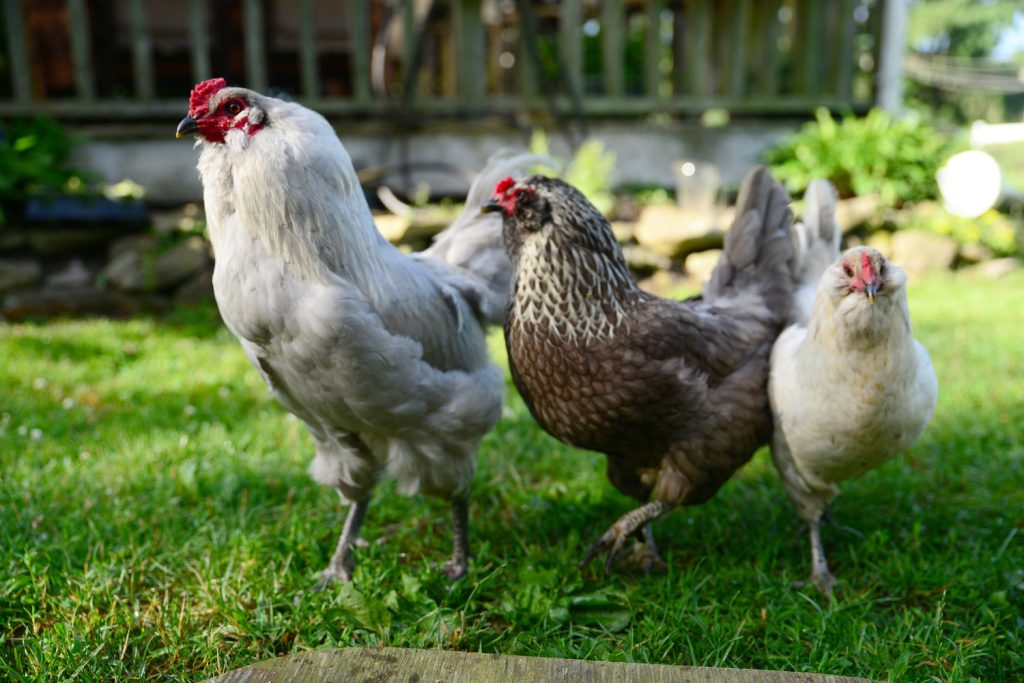
As crossbreeds, olive eggers do not have a very long history as a recognized type of chicken. The first occurrences of chickens laying green eggs were occasionally observed when brown egg layers and blue egg layers naturally mated. It wasn’t until relatively recently that breeders intentionally created olive egger chickens.
Development of the Blue Egg Gene
The origins of the olive egger can be traced back to the breeds that carry the blue egg gene. Ameraucanas and Araucanas, two similar chicken breeds developed in Chile and the United States, are thought to be the first blue egg layers. From them, the blue egg characteristic was introduced into other breeds like Easter Eggers.
Crossing Brown Layers and Blue Layers
Once there were brown egg layers and blue egg layers available, homesteaders and breeders saw the potential of crossing these two types of chickens. By breeding a hen that lays brown eggs with a rooster that carries the blue egg gene, some of their offspring would lay green eggs while exhibiting an array of feather patterns from both parental breeds.
The actual term “olive egger” is believed to have originated in the early 2000s when more small-scale chicken enthusiasts intentionally started breeding them. Their numbers and popularity have been steadily growing since then.
Egg Production and Egg Color
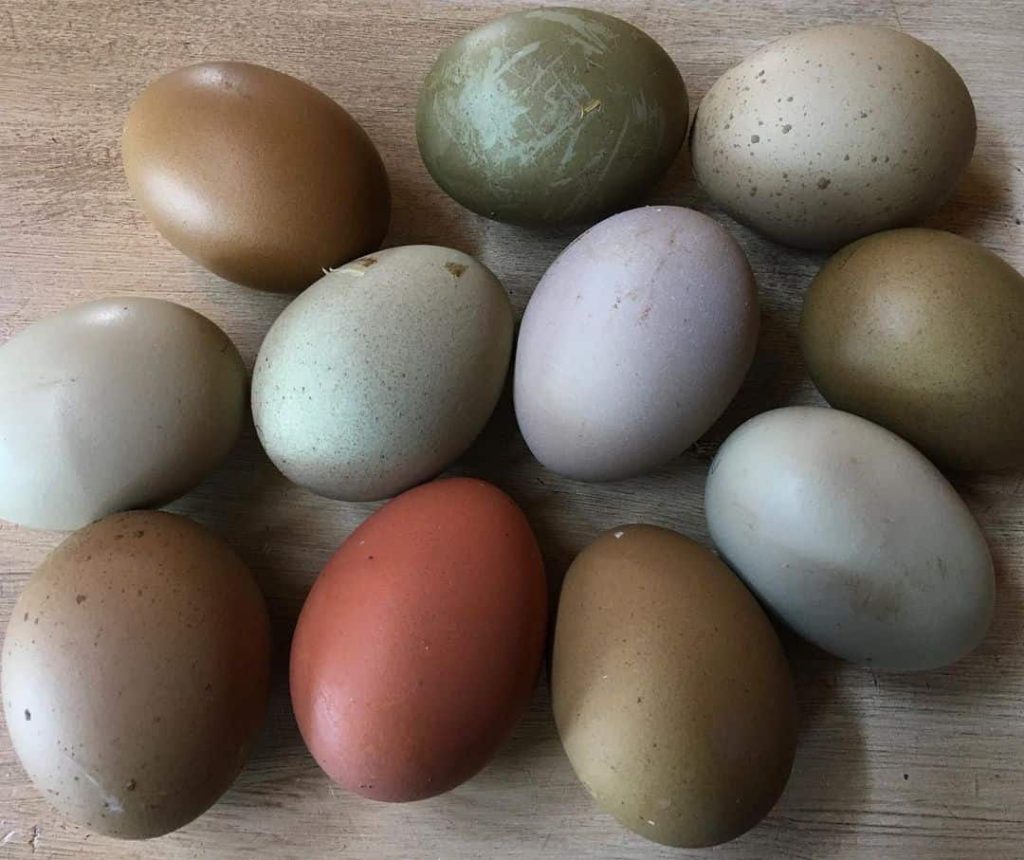
The main appeal of olive eggers is definitely their egg color. Not only is the tone unique, but the eggs can vary quite a bit from hen to hen. However, olive eggers lay much more than just pretty eggs.
Egg Color and Variations
As the offspring of a brown layer and a blue layer, olive eggers lay eggs with a blended pigmentation. Combining the brown and blue tones results in shades of green or aqua that can range from a very pale green to a deeper olive green. Some hens even lay more blue-tinged eggs that almost appear robin’s egg blue.
Each individual olive egger has her own specific egg color. Some hens lay eggs that are quite uniform in shade at every lay while other hens produce eggs with more variability from one to the next. Usually about 20 weeks old is when pullets start laying eggs so their final color can be determined.
Egg Production Amounts
In addition to egg color, olive eggers also get high marks for egg laying productivity. As hybrid chickens, they benefit from strong egg laying genetics on both sides of their parental lineage. Most heritage chicken breeds are not known for being as prodigiously productive.
On average, olive eggers lay about 4-5 eggs per week or about 250 eggs annually. Some individual hens may lay closer to 300 eggs per year under ideal conditions. For comparison, most purebreds and older breeds lay closer to 200 eggs annually or sometimes less.
Olive eggers achieve peak production in their first and second years of laying. After the two year mark, egg production gradually starts declining year by year as the hen ages. Olive eggers can still produce a respectable number of eggs for 5+ years.
Egg Size and Quality
Besides color, olive egger eggs are medium in size and exceptional in quality. Their thick shells, quality albumen and firm orange yolks make them perfect for cooking, crafting, farmer’s markets and more. The beautiful egg colors even carry through to baked goods made with olive egger eggs.
Appearance and Characteristics

Beyond their striking looks, Olive Eggers are known for their friendly and docile temperaments. They are often described as inquisitive and sociable, making them excellent candidates for backyard flocks or as pets. Their calm demeanor and ease of handling also make them a popular choice for children and families.
In terms of size, Olive Eggers are typically considered medium to large fowl, with hens weighing between 5 and 7 pounds and roosters ranging from 7 to 9 pounds. Their bodies are well-proportioned and robust, with a broad, rounded breast and sturdy legs.
One unique characteristic of the Olive Egger is the presence of tufts or cheek muffs, which are fluffy feathers that protrude from the sides of their heads. This feature is inherited from their Araucana or Ameraucana parent and adds to their distinctive and endearing appearance.
Temperament and Disposition
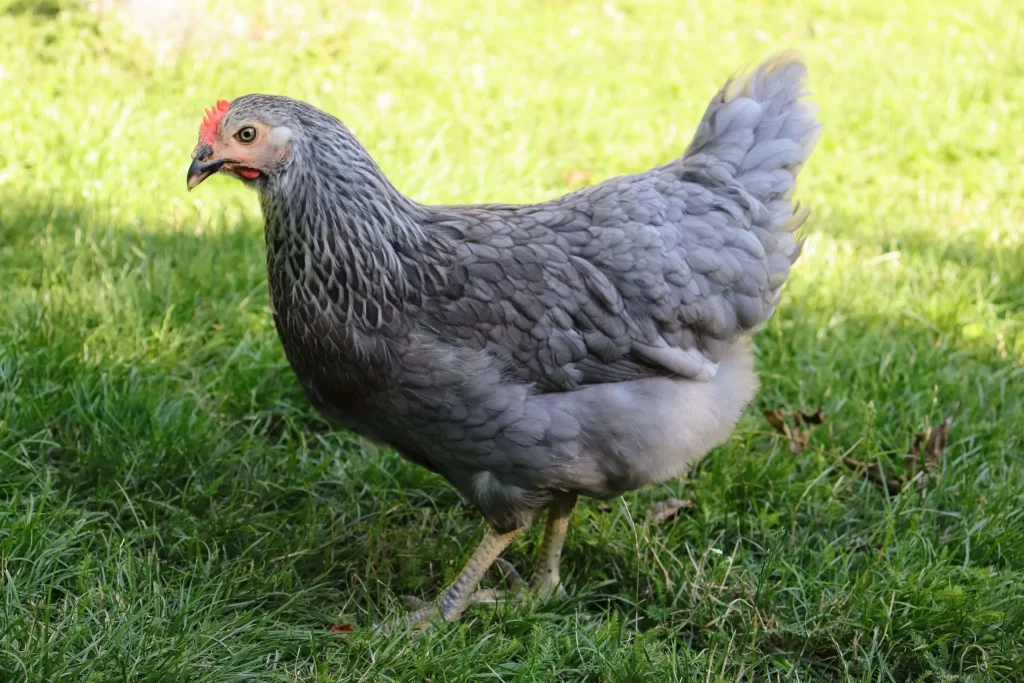
In addition to looks and laying ability, olive eggers also excel behaviorally as backyard chickens. Typically they have a docile temperament and do wonderfully as family-friendly chickens raised by experienced or novice owners alike.
Ideal for Novice Owners
Olive eggers tend to be quite mellow as far as chicken breeds are concerned. Roosters are usually not overly aggressive, especially compared with some other hybrids and purebreds. Hens also don’t go broody frequently, unlike hardy heritage breeds developed specifically for setting.
These traits make the easy-going and resilient olive egger an exceptional choice for beginning chicken keepers or as an addition to existing mixed flocks. They are satisfied being pets as long as their basic needs are provided for.
Kid and Family-Friendly
For family flocks with curious children, olive eggers are a prudent pick as well. Most acclimate quickly to attention and enjoy interacting with their human caretakers. Their feathers stand up well to gentle handling from excited kids.
As long as basic care guidelines are followed and they have adequate space, olive eggers usually coexist amicably with children of all ages as well as other family pets like dogs. Their somewhat reserved personality helps minimize confrontations.
Low Bullying and Foraging Behaviors
A more timid breed, olive eggers tend to be near the bottom of the pecking order, so they aren’t usually aggressive or bossy to other chickens. Minimal bullying also makes them great for introducing to an established flock.
While decent foragers when allowed to free range, olive eggers are just as content being kept confined. As long as their feed and habitat needs are accounted for, they remain productive and congenial.
General Hardiness
As crosses between two cold hardy breeds, olive eggers have robust health and resilience themselves. They tolerate cold climates and a variety of living conditions quite well compared to more high-maintenance breeds.
Olive eggers are not prone to many inheritable conditions either. They have decent lifespans of 4-6+ years on average with minimal health issues along the way as long as properly cared for.
Ideal Living Conditions
While resilient enough for most small farm setups, providing eggers living with appropriate housing and space allows them to thrive even more. Below are some standard recommendations for habitat parameters and flock size.
Coop Size
The standard rule of thumb is to allow a minimum of 2-4 square feet per chicken inside the coop itself. More space is preferred when possible for freedom of movement and establishing a hierarchy. Nesting boxes, roosting rails and feeders take up some floor area as well.
The exact olive egger flock size a given coop can accommodate depends on it’s total square footage and layout. Just keep in mind that overcrowding causes stress and unhealthy chickens.
Outdoor Space
In addition to an indoor shelter, the outdoor enclosure size is important for olive eggers’ wellbeing too. Each chicken should have at least 5-10 square feet of outdoor space for roaming, dust bathing, scratching and foraging. More is better so they can exhibit natural behaviors.
The run should have areas that are shaded and uncovered with both dirt patches for dust bathing and grassy sections. Having adequate outdoor area helps keep chickens active and prevent boredom-related behavior issues.
Nutrition and Dietary Considerations
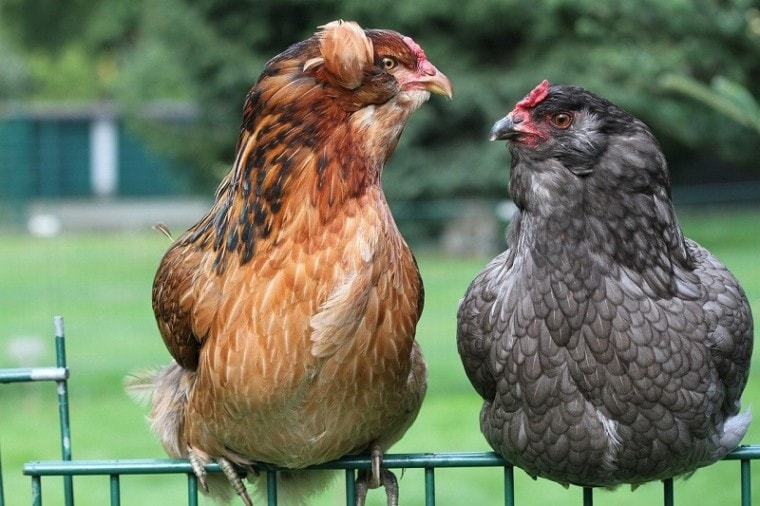
Providing the correct diet is imperative for olive eggers to grow properly, lay eggs consistently and remain in prime health. Below are some key nutrition guidelines for feeding.
Quality Layer Feed
Like most domesticated laying chickens today, the base of olive egger’s diet should be a complete layer feed. This supplies the 16% protein content and calcium levels (2.5-4%) necessary for prolific laying year-round.
Most layer feeds contain supplemental vitamins and minerals too, especially calcium sources. Look for feeds made for hybrid chickens rather than purely heritage breeds. This better matches olive eggers’ higher energy requirements.
Olive eggers that don’t get adequate nutrition from their feed will have issues like decreased eggs, soft or thin shells, lethargy, poor feathering and general poor health. Provide feed designed for laying chickens.
Treats and Supplements
In addition to a quality complete feed, olive eggers enjoy supplements like scratch grains, vegetable and fruit scraps, mealworms, etc. These extras add enrichment and micronutrients to their diet.
Treats should stay under 10% of the overall diet since the layer feed should provide the majority of balanced nutrition olive eggers need. Avoid unhealthy snacks like cracked corn, bread, chips and sweets.
Calcium for Eggshells
Getting ample bioavailable calcium ensures olive eggers produce strong eggshells. Oyster shell grit as a free choice supplement is the most popular calcium booster. Crushed eggshells, small animal bone meal and limestone chips also work.
If hens seem to have weakened eggshells or difficulty fully passing eggs, increase calcium supplements right away. Weak shells indicate a current deficiency hampering egg production.
Grit for Digestion
Lastly, providing grit in some form is important for digestion and nutrient absorption. Insoluble granite grit physically helps grind up food in olive eggers’ crops and gizzards. Without it, digestive issues can occur which then impact egg laying frequency and manure quality.
Access to Water
Clean drinking water must be available at all times as well. Lack of water causes numerous problems quickly with chickens. Olive eggers need constant water to maintain bodily functions, digest feed, absorb nutrients, regulate body temperature and of course, produce eggs.
Breeding Considerations
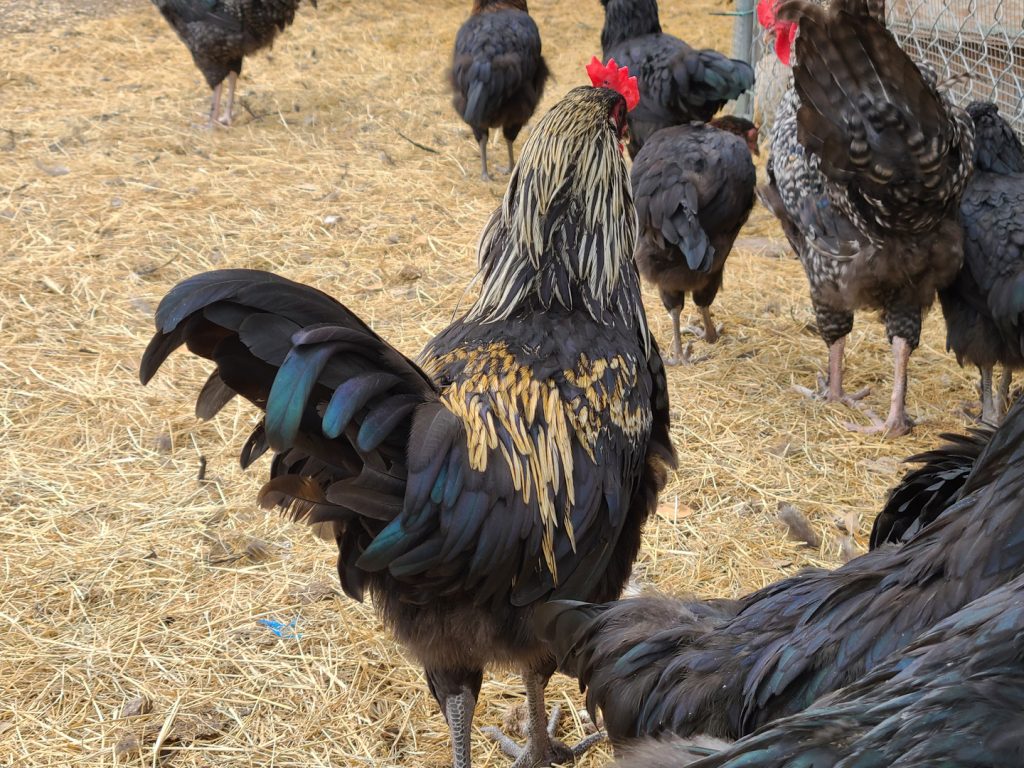
Those interested in propagating the olive egger breed should first familiarize themselves with some key genetic factors that impact egg color in subsequent generations.
Rooster Selection Impacts Egg Color
When trying to reproduce olive egg coloring in offspring, the breeds and specific parents chosen as the sire (rooster) and dam (hen) are paramount. Color outcomes rely heavily upon the rooster’s genetics.
For the highest chance of more olive eggers, the sire himself should come from olive egger or Easter Egger lineage if possible and carry the blue egg gene clearly expressed. Pure Ameraucana or Easter Egger roosters bred to pure brown egg layers works as well.
With random mixed breed roosters, you may still end up with olive eggers in the offspring but at lower ratios. There is also a possibility of other egg colors like blue, green, brown or even white eggs depending on recessive genes.
Not All Offspring Lay Olive Eggs
If breeding two known olive eggers together, their offspring will each have about a 50% chance of laying olive eggs themselves. Some pullets end up only laying blue or brown eggs since hidden recessive genes can be expressed randomly.
There is no guarantee when breeding olive eggers that all offspring will lay olive eggs, even with responsible selection of parent stock. Genetic variability keeps things interesting with olive eggers from generation to generation!
FAQs
The easiest way to acquire olive egger chickens is to purchase them from a breeder that specializes in them. You can also try breeding your own by crossing a brown egg layer rooster with a blue egg layer hen. The resulting offspring should produce some olive egg layers.
Olive eggers lay eggs in shades of green, aqua, blue-green and olive. Each individual hen’s eggs can be slightly different in color intensity and hue. Some olive egger’s eggs look more green while others appear more blue or sage green.
On average, olive eggers lay about 250 eggs per year. Some exceptional hens may lay up to 300 eggs annually. This compares very favorably to most chicken breeds that lay closer to 200 eggs per year.
Yes, olive eggers tend to tolerate cold weather quite well since they were created from two very cold hardy parent breeds. Their thick plumage keeps them insulated during winter weather in most climates.
Olive eggers infrequently exhibit broody tendencies. Because they come from such prodigiously productive egg laying breeds, the urge to go broody has been largely bred out of most olive egger bloodlines.
Since they are crossbreed mutts, no two olive eggers look exactly alike. Common feather colors range from black, brown, red, copper, white, gray, blonde and more. Markings like barring, pea comb and feathered feet occur as well depending on genetics.
Yes! Most olive eggers have a very friendly personality and docile temperament that makes them a joy to keep as backyard chickens. They become quite tame when handled frequently and acclimate well to human interaction.
Conclusion
For backyard chicken keepers seeking a pet with personality and charm or small farmers wanting a blue eggs alternative, olive eggers make for outstanding and lively additions thanks to their looks, disposition, egg color and agreeable temperament. As increasing numbers of people add chickens to their homesteads, the one-of-a-kind olive egger will only continue gaining notoriety and fans. Any poultry owner would feel fortunate to have these charismatic chickens clucking around the yard!




